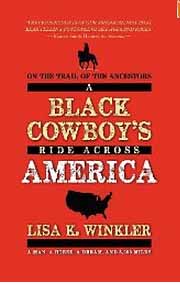You find many Central Valley residents vacationing just over the Coastal Mountains in Paso Robles as well as in the beach towns just west of there. As you drive past the many new vineyards that surround the town into Paso Robles, you have just exited one of the most soporific road trips through the hills past Kettleman City. Unless I'm driving, I sleep through these hills - both coming and going.
![Wake up! We're going to Paso]()
- Wake up! We're going to Paso! Actually this is leaving Paso, so don't be confused by where the mountains are. I just wanted you to see how boring it is.
El Paso del Robles, passage of the Oaks, is an old western town dividing the two worlds, the desert heat of the Kettleman City hills and the Tulare Lake Basin, and the Central Coast of San Luis Obispo County beginning to the north with Cayucos, Cambria, Hearst Castle, and south to Morro Bay, San Luis Obispo, Pismo Beach, Avila Beach, Arroyo Grande, ending with Nipomo before you move into Santa Barbara County.
![Paso Robles Inn, built in 1891.]()
- Paso Robles Inn, built in 1891.
Once you get to the Paso Robles Inn, built in 1891 and rebuilt in 1942 after a devastating fire, you can begin to see the 19th century charm of Paso Robles. Once known for its 124 degree hot springs, you might want to try this hotel which still has hot spring spas in about 1/3 of the rooms. I took this picture on April 1st, an unusually cloudy day in Paso.
The original building, thought to be indestructible, and "absolutely fireproof, had to be rebuilt after it burnt down in 1940. The builders kept the mission style, especially evident in the front patio.
![Paso Robles]()
The front of the Inn looks western and old. You can see the mission-style covered front porch. This is handy in the hot sun. It's pleasant even in the winter.
![]()
The original building, thought to be indestructible, and "absolutely fireproof, had to be rebuilt after it burnt down in 1940. The builders kept the mission style, especially evident in the front patio.

The front of the Inn looks western and old. You can see the mission-style covered front porch. This is handy in the hot sun. It's pleasant even in the winter.

Behind the inn is a charming outdoor seating area overlooking the hotel grounds. The restaurant serves plenty of delicious food, but to me the real benefit is the setting.
Beneath the beautiful fountain, they grew some of their vegetables. I doubt that they used very many of them because the garden looked too perfect. Maybe they had some others hidden away somewhere.![gallery type="square" columns="2" ids="5412,5413"]()

I am always fascinated by flowing water and fish and bridges. It's the perfect place for a wedding, and someone was celebrating the day we visited.
The grounds are perfectly manicured.
The grounds are perfectly manicured.
![Don't they look famous with their sunglasses?]()
- Don't they look famous with their sunglasses?
Our friends arrived, then lunch came with sweet potato fries (no wonder I'm dieting now). We wandered around the historic area across from the Inn, and all too quickly it was time to go back home again. With a full tummy, Vince's bride slept her way through the boring trip home.
![zzzzzzzzzzzzzz]()
- zzzzzzzzzzzzzz glub, glu zzzzzzzzzzz
Another successful Valleycation. :)
Some historic places you might want to visit in Paso Robles are listed on the City of Paso Robles website. You might also enjoy the tours offered by some of the Paso Wineries.
Some historic places you might want to visit in Paso Robles are listed on the City of Paso Robles website. You might also enjoy the tours offered by some of the Paso Wineries.
































